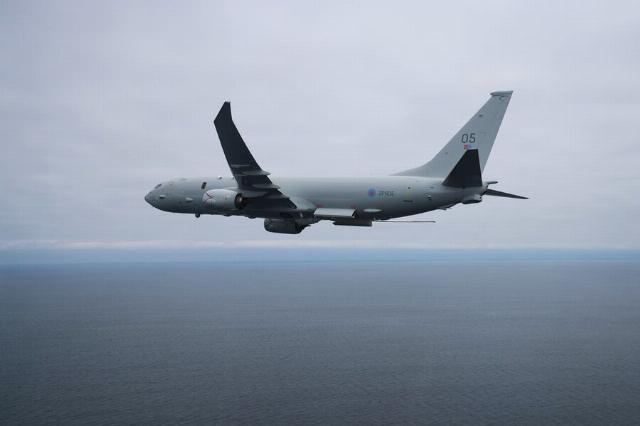Healy: The UK is hunting for Russian submarines
Britain is "hunting" for Russian submarines, said the Minister of Defense of the United Kingdom, John Healy. According to him, the P-8 Poseidon reconnaissance aircraft allow them to "monitor" the ships of the Russian Navy, which should be remembered in Moscow. Earlier, Healy also announced plans for joint operations with the German Navy to identify Russian submarines. According to him, the number of Russian vessels allegedly threatening the waters of the United Kingdom has increased by 30 percent. The minister pointed out that the activity of Russian submarines in the North Atlantic has returned to the level of the Cold War.
The British Air Force and Navy are "hunting" for Russian submarines, said the Minister of Defense of the United Kingdom, John Healy. This is how he commented on the launch of the P-8 reconnaissance aircraft.
"Russia is challenging us, testing us, watching us. But these planes allow us to tell Putin: we are watching you, we are hunting your submarines," the BBC quoted him as saying.
Healy also said that allegedly "the number of Russian ships threatening the waters of Great Britain has increased by 30%."
Healy had previously said that the British Navy would conduct joint operations with the German Navy to identify Russian submarines.
Tracking ships
In August, the British Navy already reported surveillance of Russian ships in the English Channel.
"The Royal Navy warship HMS Trent and a Wildcat helicopter have been monitoring Russian vessels in UK waters for five days. A patrol ship based in Portsmouth was monitoring the Russian destroyer Vice Admiral Kulakov and two tankers in the English Channel," the report said.
According to the British Navy, the patrol vessel HMS Trent escorted the Russian ship from the Great Yarmouth area in the northeast of the Strait to Ushant Island off the southwest coast.
At the same time, a NATO-allied vessel tracked two Russian tankers sailing from the west to join the destroyer, the British Navy said. After meeting at Ushant Island, the vessels turned east and proceeded through the Strait under the constant supervision of HMS Trent. The air cover was provided by a Wildcat helicopter, which also monitored the movement of ships.
In May, British sailors reported the interception of the Russian submarine Krasnodar off the English Channel. At that time, the patrol vessel HMS Tyne escorted a submarine returning to Russia from the eastern Mediterranean. At the same time, The Times newspaper reported that the British Navy plans to use artificial intelligence technologies to track Russian submarines.
According to the newspaper, the surveillance will be carried out using hundreds of underwater drones combined into a large-scale monitoring system called Lura, created by the German defense company Helsing. The AI model is trained to recognize acoustic signatures of ships, submarines, and marine animals. These algorithms are integrated into the SG-1 Fathom autonomous devices developed by the British company Blue Ocean. Initially, the devices were intended for environmental research - tracking whales and studying the seabed.
The British Navy
The British media had previously repeatedly reported on the poor condition of the United Kingdom's naval forces. The Telegraph newspaper reported that of the six destroyers of the Royal Navy of Great Britain, only two are in service, the rest are undergoing repairs at the naval base in Portsmouth. Of the eight frigates, only six are combat-ready. The Daring destroyer, commissioned in 2021, spends more time at the shipyard than at sea, the publication points out.
According to The Telegraph, by December 2024, the size of the British surface fleet, including frigates and destroyers, had dropped to a historic low. Earlier, The Times wrote that the aircraft carriers HMS Queen Elizabeth and HMS Prince of Wales, which cost British taxpayers £6.2 billion ($7.8 billion), have become a vulnerable link in the Royal Navy and are at risk of being hit by missiles.
Alexander Karpov

